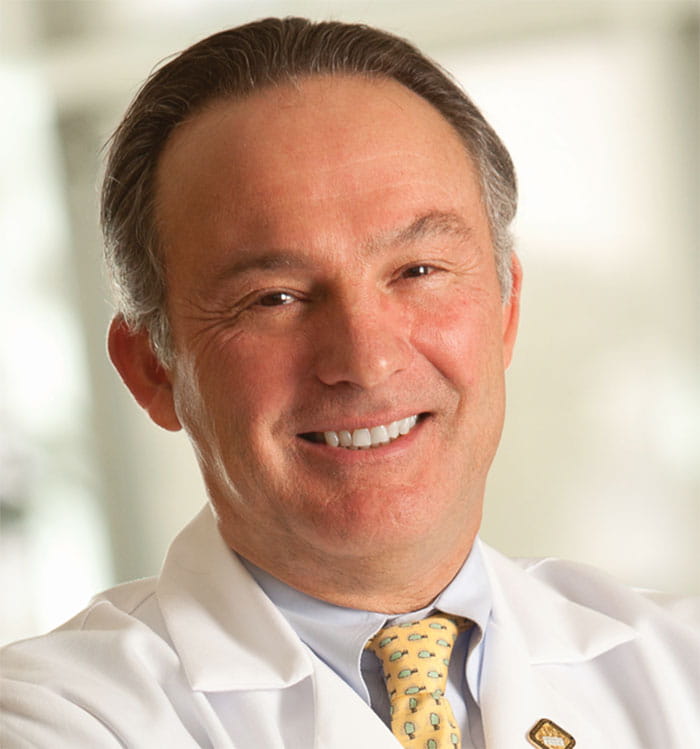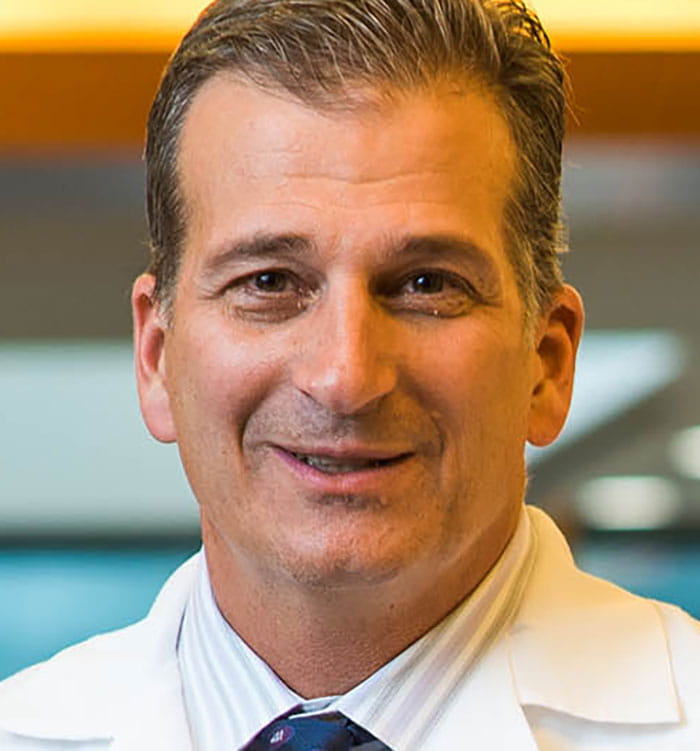Leading the Way in Orthopaedic Trauma and Post-Traumatic Reconstruction
January 13, 2017
UH Cleveland Medical Center - a Level 1 trauma center
Innovations in Orthopaedics - Winter 2016 PDF Download
 Randall Marcus, MD
Randall Marcus, MD John Sontich, MD
John Sontich, MD
To become a level 1 trauma center, university hospitals cleveland medical center made a significant investment that elevates not only the services of the emergency room, but those of the full hospital as well, including operating rooms, radiology and the orthopaedics department. “it’s also allowed us to recruit some outstanding traumatologists,” says randall marcus, md, charles h. Herndon professor and chairman of the department of orthopaedic surgery.
Expert Leadership
Under the leadership of John Sontich, MD, Division Chief, Orthopaedic Trauma and Post-Traumatic Reconstruction, UH Cleveland Medical Center and Associate Professor of Orthopaedics, Case Western Reserve University School of Medicine, and Kevin Malone, MD, Chief of the Division of Hand and Upper Extremity, the orthopaedics department now offers an expanded range of services, with exceptional expertise in the areas of limb salvage, post-traumatic reconstruction, and treatment of complex fractures. Both chiefs were recruited from Cleveland’s MetroHealth Medical Center.
“With the loss of the Huron Road Hospital, one of the things that motivates me,” says Dr. Sontich, “is to provide Level 1 trauma care to the Eastside of Cleveland.” In addition, Dr. Sontich hopes those community members will call on his team for post-traumatic reconstruction services as well. “There are a lot of patients who have chronic, debilitating problems from malunited and nonunited fractures – both children and adults,” he says. Dr. Sontich joins pediatric orthopaedic surgeon Raymond Liu, MD, in providing expertise in post-traumatic reconstruction.
A Bold Vision
“Providing these services is a very important part of what we’re here to do at UH,” says Dr. Sontich. “We now have the unique expertise to make University Hospitals a national referral center for post-traumatic reconstructive surgery,” says Dr. Sontich, “because of our location, the partnerships with Cleveland’s academic centers, and having both pediatric and adult trauma centers in the same institution.”
With more than two decades of experience in orthopaedic trauma, Dr. Sontich is – and describes himself as – “one of the elder statesmen” in the field, with an international reputation in limb salvage as well as the highest regard of his peers. He has served as past president of the International Limb Lengthening Reconstruction Society, among many other honors. His vision for the Division of Orthopaedic Trauma and Post-Traumatic Reconstruction is to develop a nationally ranked orthopaedic trauma center that cares for patients from the moment of first response through post-traumatic reconstruction and patient rehabilitation. “We are providing outstanding care, utilizing the newest of technologies to give patients the best outcomes,”says Dr. Sontich. The overall goal is to serve the community better, “and not just locally,” he says, “but regionally, as a major place of referral.”
Expanding Services and Expertise
Since Dec. 1, 2015, at anytime day or night, the orthopaedic trauma team at UH Case Medical Center is ready to care for patients whatever their injury. A new, specialized operating room is purposefully designed and equipped to treat orthopaedic trauma patients – the kind of emergencies that literally threaten life and limb.
“The most urgent cases,” explains Dr. Sontich, “are any injury that includes massive blood loss, such as complex pelvic fractures.”nHaving committed the resources, UH Case Medical Center is fully prepared to treat these patients. Most medical centers lack the expertise, says Dr. Sontich, “as only a few orthopaedic surgeons are trained in the treatment of these life-threatening, high-energy fractures.” Emphasizing that point further, Robert Wetzel, MD, says, “Very few people do what I do.” A traumatologist, Dr. Wetzel was also recruited as part of the University Hospitals’ expansion effort.
Focusing on complex fractures, whether arising in multiple-injured patients or in regard to hip reservation, Dr. Wetzel says that in emergency situations “orthopaedic problems usually take a back seat to stabilizing the patient, but there are situations when orthopaedic trauma surgeons will take the lead. “And if someone has high-energy injuries,” Dr. Wetzel says, “then they really need to be at a Level 1 trauma center” with both the general surgical and orthopaedic trauma teams coordinating their efforts for the best possible outcome for the patient.
A Better Trauma System
That cooperation and camaraderie among trauma surgeons goes well beyond their subspecialties or their hospitals. For as much as the rest of the world ranks hospitals, trauma teams and even individual surgeons, what matters most to doctors is being in the right place, at the right time and having the right resources available to care for patients. For Cleveland, now having a Level 1 trauma center on the Eastside with good access for patients is what matters most. “The relationship with MetroHealth Medical Center, where I trained and worked for decades,” says Dr.Sontich, “is continuing to develop. And working together, we’ll have a better trauma system for treating the people of Cleveland and Northeast Ohio.”
Article revised January - 2017
Tags: Trauma


